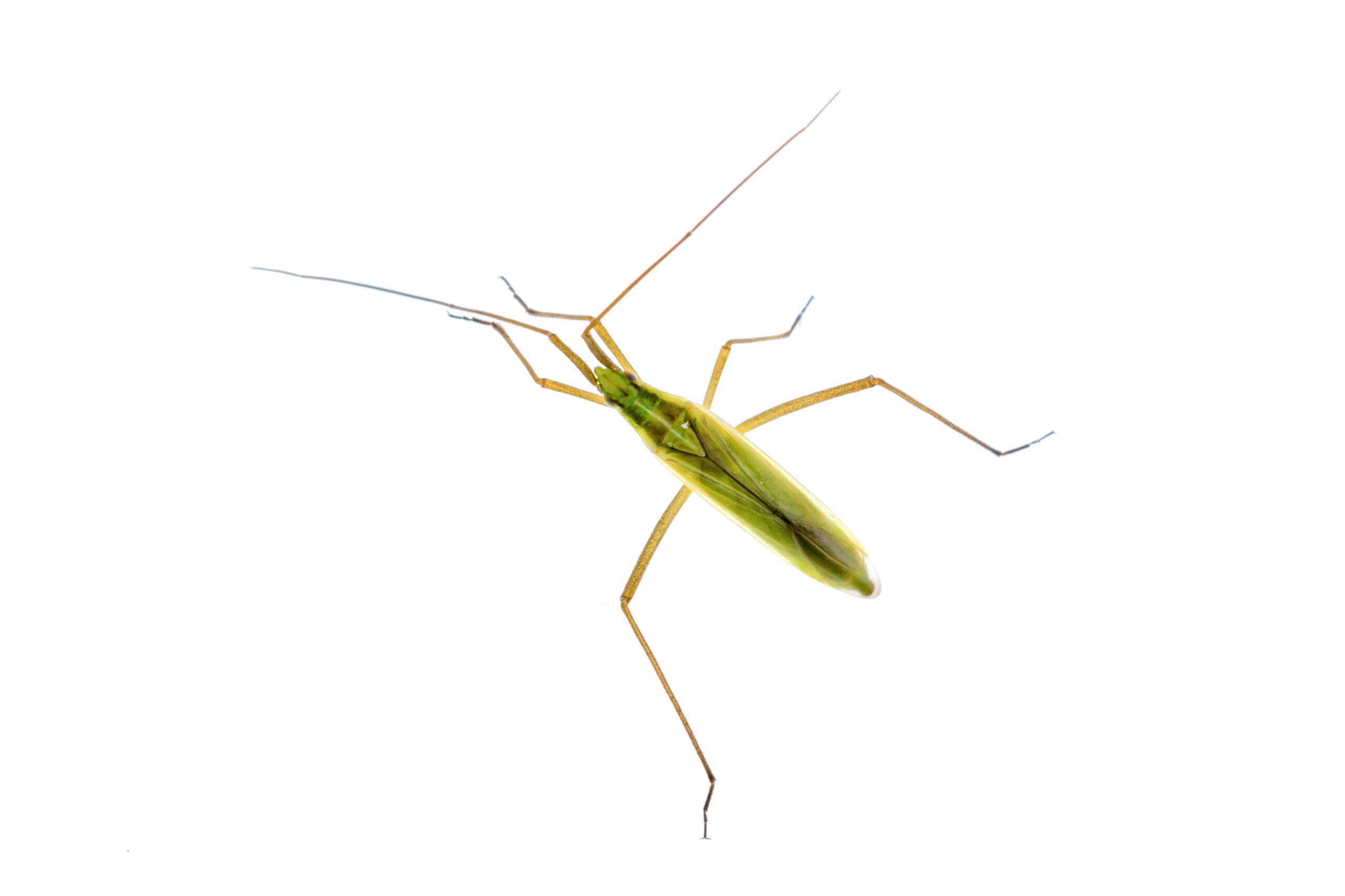1. About Aphids
Aphids are small, soft-bodied insects that feed by sucking sap from plants. These tiny pests come in a variety of colors, including green, black, yellow, and red. Aphids are typically found on the undersides of leaves, stems, and flower buds, where they cause damage by extracting plant juices. In addition to weakening the plant, aphids can transmit diseases and create a sticky residue called honeydew, which attracts mold growth. Aphids are highly prolific and can rapidly reproduce, making them a serious threat to gardens, crops, and ornamental plants.
2. How to Get Rid of Aphids
Aphid control can be achieved through various methods depending on the severity of the infestation. Start by physically removing aphids from plants using a strong stream of water. For more persistent infestations, insecticidal soap or neem oil can be applied to affected plants, which targets the aphids without harming the plant. Introducing natural predators like ladybugs and lacewing larvae can help control aphid populations. In severe cases, a more targeted chemical treatment may be necessary. Keep in mind that regular monitoring and early intervention are key to preventing aphid outbreaks.
3. Introduction
Aphids are among the most common and damaging pests found in gardens, agricultural fields, and greenhouses. Although they are relatively small, their ability to reproduce quickly and damage plants can have significant consequences. Aphid infestations often go unnoticed until plants start showing signs of stress, such as yellowing leaves, stunted growth, or curled leaves. Recognizing aphids early and taking appropriate action can help prevent extensive damage to your plants and crops.
4. Identification of Aphids
Aphids are typically small, ranging in size from 1 to 10 mm. They have pear-shaped bodies, long legs, and two antennae. Most aphids are green, black, or yellow, though other colors can also be found depending on the species. They are soft-bodied and have a distinctive pair of tube-like structures called cornicles protruding from their hind end. These insects are often found in clusters on the underside of leaves, tender shoots, or flower buds. Their presence is usually accompanied by a sticky substance (honeydew) on plants and surrounding surfaces.
5. Behavior and Habitat
Aphids are most commonly found on plants that are growing rapidly, especially in the spring and summer months. They prefer to inhabit the undersides of leaves, where they feed on plant sap. Aphids are known for their rapid reproduction rate and can give birth to live young without mating, allowing their populations to grow quickly. They also produce a sugary secretion known as honeydew, which can attract ants and lead to the growth of sooty mold on plants. Aphids are capable of moving between plants, spreading from one infested area to another.
6. Feeding Habits
Aphids feed by piercing plant cells with their needle-like mouthparts and sucking out sap. This process weakens the plant, leading to yellowing, wilting, and sometimes distortion of leaves and flowers. Aphids are often found in large groups, feeding on new growth, tender shoots, and flower buds. In addition to causing direct damage, aphids can transmit viral diseases between plants. The sticky honeydew they excrete can attract ants and promote the growth of mold, further harming the plant’s health.
7. Prevention and Protection
To prevent aphid infestations, it is important to maintain healthy plants by providing proper care, such as watering, pruning, and fertilizing. Regularly inspect plants for aphids, especially during the growing season. Remove infested leaves or stems promptly to minimize the spread. You can also introduce natural aphid predators, such as ladybugs or lacewing larvae, which can help control their numbers. Using reflective mulches around plants can help deter aphids as they dislike the light reflections. Insecticidal soap or neem oil can be applied to plants as a preventive measure against aphids.
8. Methods of Control
There are several methods available for controlling aphid populations. For minor infestations, you can simply spray the plants with water to dislodge the aphids. Insecticidal soap or neem oil can be applied to the plants to control aphids without harming the plant. For larger infestations, introducing natural predators like ladybugs or parasitic wasps can help reduce aphid numbers. Chemical insecticides may be used if the infestation is severe, but it is important to use them sparingly and follow all safety guidelines. Regularly monitoring your plants is crucial to catching aphid problems early.
9. Environmental Impact and Ecology
Aphids play a significant role in ecosystems as a food source for many predators, including ladybugs, lacewings, and birds. While they are a natural part of the food chain, aphid infestations can disrupt the balance of ecosystems when left uncontrolled. Aphids can spread plant viruses, damaging crops and reducing biodiversity in gardens and agricultural fields. The use of natural predators and eco-friendly pest control methods, like insecticidal soap, helps protect the environment while managing aphid populations. Avoiding excessive use of chemical insecticides is important to maintain healthy ecosystems.
10. Conclusion
Aphids are small but persistent pests that can cause significant damage to plants, crops, and ornamental gardens. With their rapid reproductive capabilities and ability to transmit diseases, aphid control is essential for maintaining healthy plants. By identifying aphid infestations early and using a combination of preventive measures and treatment methods, you can minimize the impact of these pests. Whether through natural predators, eco-friendly sprays, or professional pest control services, managing aphid populations ensures that your plants remain healthy and thriving.


